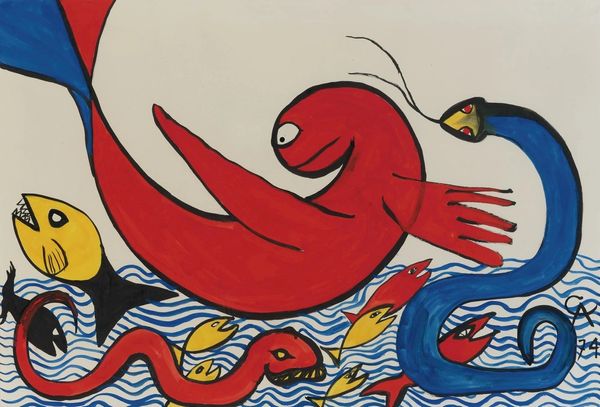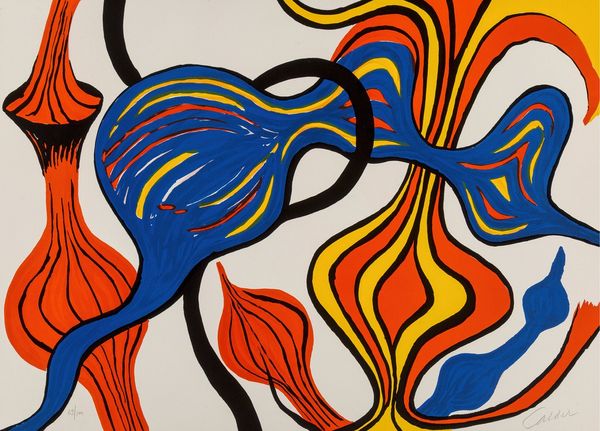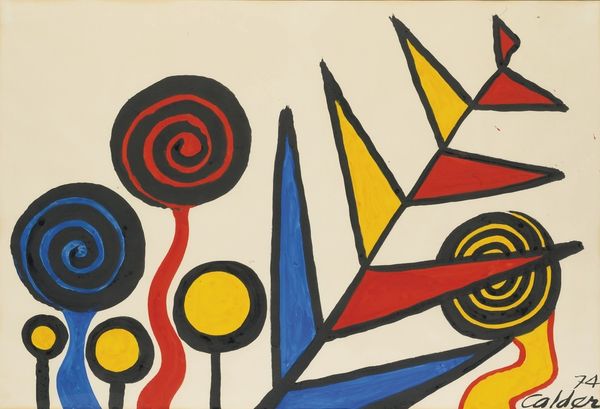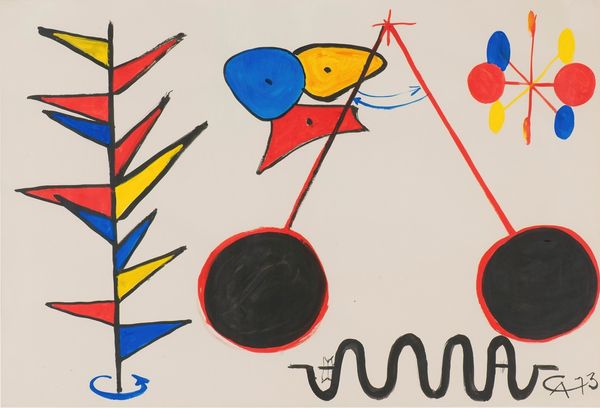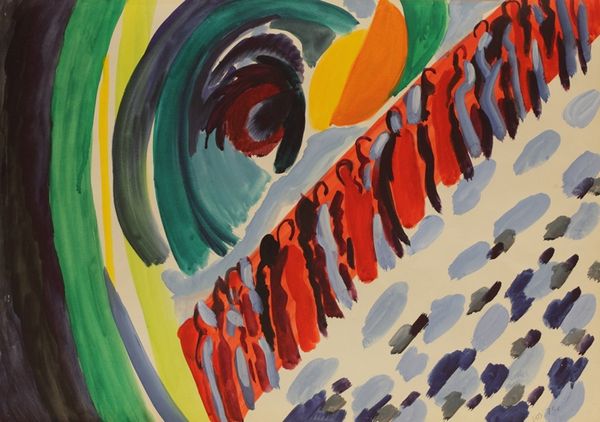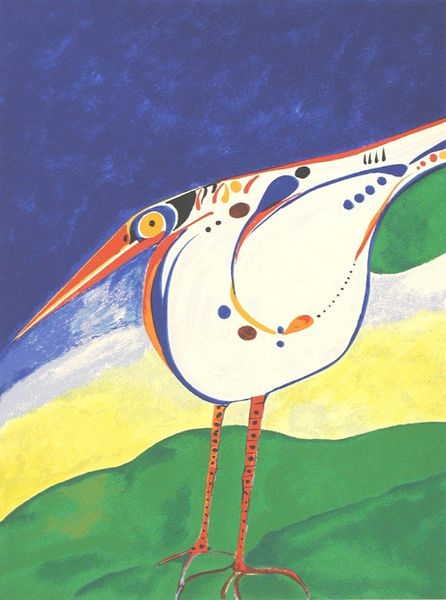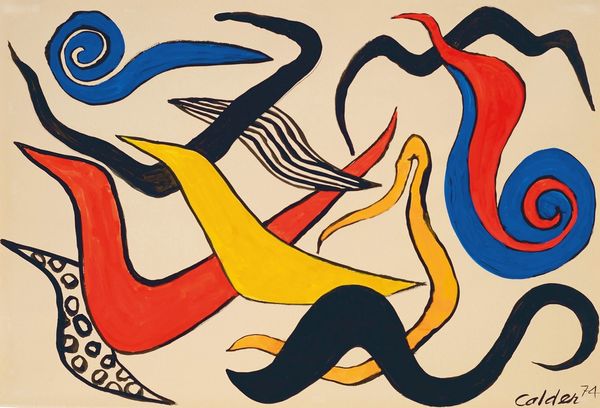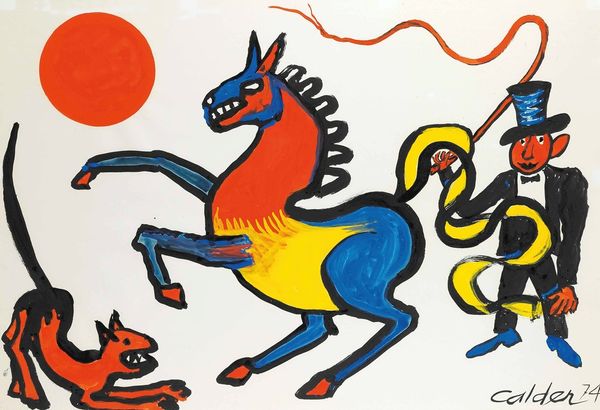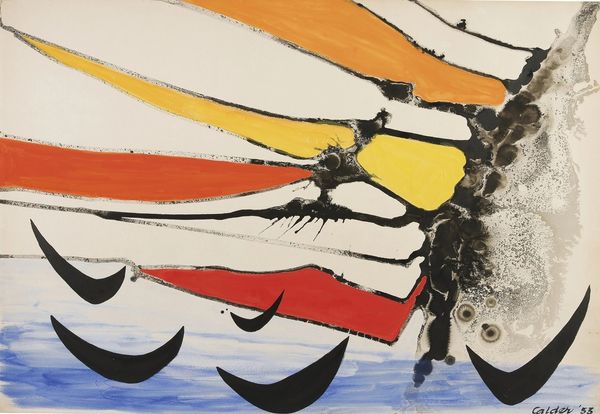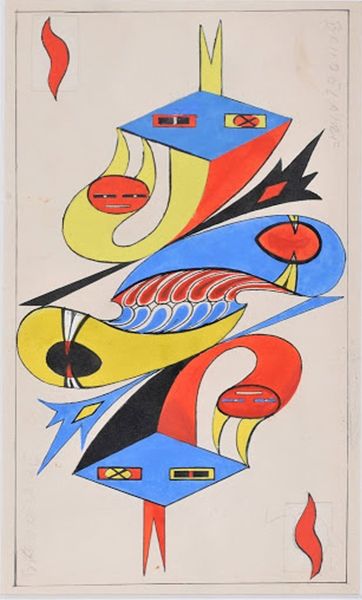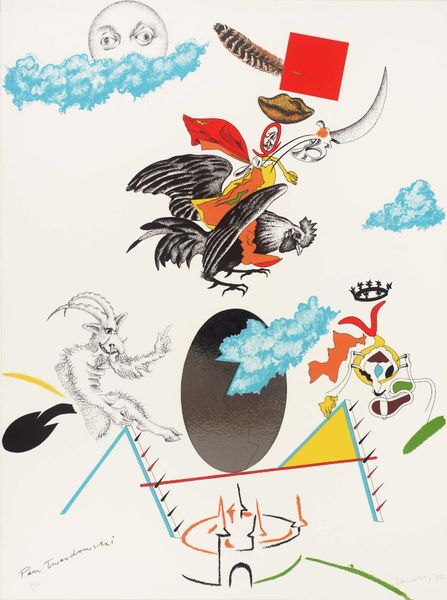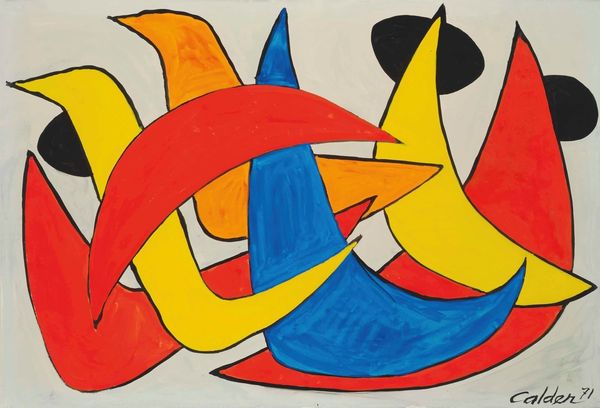
Copyright: Modern Artists: Artvee
Curator: So striking! What's your first take on Calder's "Eagle and Fish" from 1975? The stark contrast between those vibrant blocks of color immediately grabs the eye. Editor: It's instantly primal, isn't it? The visual language here is bold, even aggressive. The piece, realized in acrylic paint, clearly references symbolic power dynamics, this perpetual struggle for survival that transcends specific locations or cultures. Curator: Agreed, the vibrant color palette does amplify that sense of urgency. Let's talk about the forms—very simplified, almost childlike. An eagle is rendered above two distinct types of fish against graphic blue waves over yellow sands. We immediately understand the food chain—and this idea of constant conflict between species as being the structure that our ecosystems rest upon. The forms definitely contribute to the piece's direct emotional punch. Editor: Exactly, Calder reduces these powerful animals to near-caricatures: sharp beaks and rows of white, pointed teeth, set against what could either be landscape or waterscape... This simplification of forms encourages broader interpretation. Consider also, for instance, that many nations have employed these as representative icons. Could he be engaging questions of nationalism and conflict at a wider, even geopolitical, scale? Curator: Definitely a productive question, especially if we examine it within the scope of 1970s art production! Calder also moves beyond the constraints and implications of cultural frameworks, creating universal symbols that all audiences could understand, regardless of class, nation, or education. Editor: In closing, I find myself circling back to color as meaning. Those sharp hues-- particularly the reds and blues, convey energy, and lend a frenetic tension as well. This isn't a tranquil scene, despite its surface-level simplicity! Curator: Right, it speaks volumes about the human experience, too. We tend to categorize life in similar reductive frameworks—yet we ignore how entangled everyone is. I keep thinking of Deleuze and Guattari when viewing works like this: their argument that difference is less about fixed identities but a complex matrix. Food for thought!
Comments
No comments
Be the first to comment and join the conversation on the ultimate creative platform.
